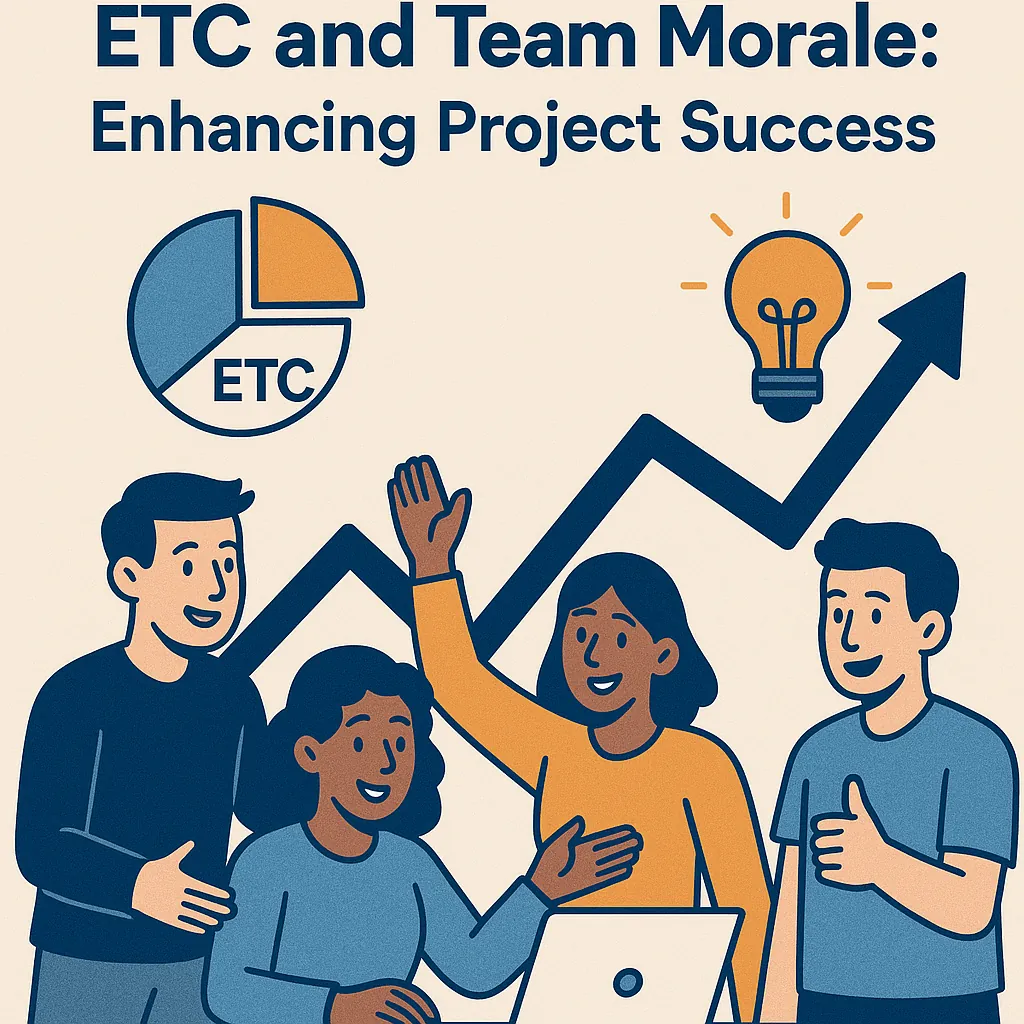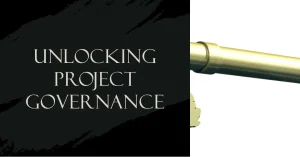Introduction to ETC in Project Management
Understanding the concept of Estimate to Complete (ETC) is crucial for ensuring project success. ETC represents the anticipated cost or effort required to complete the remaining work in a project. It serves as a vital metric that helps project managers and team leaders gauge the project’s financial health and timeline, ultimately influencing decision-making processes.
Definition and Role of ETC
- What is ETC? Estimate to Complete is a projection of the resources, time, and budget needed to finish the remaining tasks in a project. It provides a clear picture of what is left to achieve the project goals and is essential for effective project management.
- Role in Project Management: ETC plays a pivotal role in project tracking and management. By providing a forecast of the remaining work, it allows project managers to make informed decisions regarding timelines, resource allocation, and budget adjustments. This transparency is crucial for maintaining team morale, as it helps team members understand their contributions and the project’s progress.
Calculation of ETC
- How is ETC Calculated? The calculation of ETC typically involves assessing the current project status, including the work completed and the remaining tasks. The formula often used is:
ETC = Total Budget − Actual Cost − Earned Value
This calculation helps project managers determine how much more budget is needed to complete the project successfully.
- Importance in Project Tracking: Regularly updating and reviewing the ETC allows project managers to track progress against the project plan. This ongoing assessment is vital for identifying potential issues early, enabling timely interventions that can keep the project on track.
Relevance of ETC in Resource Allocation and Budget Management
- Resource Allocation: ETC is instrumental in effective resource management. By understanding the remaining work and its associated costs, project managers can allocate resources more efficiently, ensuring that the right skills and personnel are available when needed. This strategic allocation not only enhances productivity but also fosters a sense of ownership among team members.
- Budget Management: Managing a project’s budget is one of the most critical aspects of project management. ETC provides insights into whether the project is on budget or if adjustments are necessary. By maintaining transparency around ETC, project managers can communicate budgetary needs to stakeholders, which can help in securing additional funding if required. This transparency can also alleviate stress among team members, as they are more aware of the financial landscape of the project.
The Importance of Transparency in ETC Reporting
Transparency is a fundamental principle that fosters open communication and trust among team members. It refers to the practice of sharing relevant information openly, ensuring that all stakeholders are informed about the project’s status, challenges, and decisions. When applied to Estimate to Complete (ETC) reporting, transparency becomes crucial for enhancing team dynamics and overall project success.
Defining Transparency in Project Management
Transparency in project management involves clear and honest communication regarding all aspects of a project. This includes sharing data about progress, risks, and resource allocation, as well as the rationale behind decisions made throughout the project lifecycle. In the context of ETC, transparency means providing team members with accurate estimates of the remaining work and the resources required to complete it. This openness allows everyone involved to understand the project’s trajectory and their role in achieving its goals.
Impact of Transparent ETC Reporting on Trust Within Teams
Transparent ETC reporting significantly impacts trust within teams. When project managers share honest and accurate estimates, it cultivates an environment where team members feel valued and respected. This trust is essential for fostering collaboration and encouraging team members to voice concerns or suggestions without fear of repercussions. A transparent approach to ETC reporting can lead to:
- Increased Accountability: Team members are more likely to take ownership of their tasks when they understand the project’s status and the implications of their contributions.
- Enhanced Collaboration: Open communication about ETC fosters a sense of shared responsibility, encouraging team members to work together towards common objectives.
- Improved Morale: When team members are kept informed and involved in the decision-making process, it boosts their morale and motivation, leading to higher productivity levels.
Potential Risks of Non-Transparent ETC Practices
Conversely, non-transparent ETC practices can lead to several detrimental effects on team dynamics and project outcomes. When project managers withhold information or provide vague estimates, it can create an atmosphere of uncertainty and mistrust. The potential risks include:
- Erosion of Trust: Team members may feel sidelined or undervalued, leading to a breakdown in communication and collaboration.
- Increased Anxiety: Lack of clarity regarding project status can cause anxiety among team members, as they may be unsure about their performance and the project’s future.
- Poor Decision-Making: Without accurate ETC data, stakeholders may make uninformed decisions that can jeopardize the project’s success.
How ETC Transparency Boosts Team Morale
In project management, the concept of Estimate to Complete (ETC) plays a crucial role in determining the remaining effort required to complete a project. However, the impact of ETC transparency extends beyond mere numbers; it significantly influences team morale and productivity. Here’s how clear visibility of project progress can enhance team dynamics:
- Alleviating Team Anxiety: When team members have a clear understanding of the project’s progress through transparent ETC reporting, it can significantly reduce anxiety levels. Uncertainty about project timelines and deliverables often leads to stress among team members. By providing regular updates on ETC, project managers can create a more predictable environment, allowing team members to focus on their tasks without the looming fear of unexpected changes or delays. This open communication fosters a sense of security and stability within the team, which is essential for maintaining morale [2][3].
- Fostering Ownership and Accountability: Transparency in ETC not only informs team members about their individual contributions but also instills a sense of ownership over the project. When team members see how their efforts directly impact the project’s progress, they are more likely to take responsibility for their tasks. This sense of accountability can lead to increased motivation, as individuals feel their work is valued and essential to the team’s success. Moreover, when team members are encouraged to share their insights and feedback regarding the ETC, it promotes a collaborative atmosphere where everyone feels invested in the project’s outcome [10][11].
- Examples of Improved Motivation through ETC Transparency: There are numerous instances where enhanced ETC transparency has led to increased motivation among teams. For example, in a recent project, a team leader implemented weekly ETC updates during team meetings. This practice not only kept everyone informed but also allowed team members to celebrate small wins as they reached various milestones. As a result, the team reported feeling more engaged and motivated to meet their goals, leading to a successful project completion ahead of schedule. Another case involved a project where the team was struggling with deadlines. By increasing the frequency of ETC updates and encouraging open discussions about challenges, the team was able to identify bottlenecks early on and collaboratively develop solutions, which ultimately boosted their morale and productivity [12][13].
Enhancing Productivity Through ETC Practices
In project management, the concept of Estimate to Complete (ETC) plays a crucial role in not only tracking project progress but also in influencing team morale and productivity. Understanding and implementing effective ETC practices can significantly enhance overall team productivity, creating a more engaged and motivated workforce.
The Relationship Between Morale and Productivity in Project Teams
Team morale is intrinsically linked to productivity. When team members feel valued and informed, their motivation to contribute effectively increases. High morale often leads to:
- Increased Engagement: Team members who are aware of project statuses and challenges are more likely to engage actively in problem-solving and innovation.
- Better Collaboration: A transparent environment fosters open communication, allowing team members to collaborate more effectively, share ideas, and support one another.
- Reduced Turnover: Teams with high morale tend to have lower turnover rates, which is beneficial for maintaining project continuity and reducing recruitment costs.
Research indicates that when team members understand the project’s trajectory through clear ETC updates, they feel a sense of ownership and responsibility, which can lead to enhanced productivity [11].
Strategies for Integrating ETC Updates into Regular Team Meetings
To effectively integrate ETC updates into team meetings, consider the following strategies:
- Regular Check-Ins: Schedule consistent meetings (e.g., weekly or bi-weekly) dedicated to discussing project progress, including ETC metrics. This ensures that all team members are aligned and aware of their contributions to the project’s success.
- Visual Dashboards: Utilize visual aids such as dashboards that display ETC data in real-time. This can help team members quickly grasp the project’s status and understand where their efforts are needed most.
- Encourage Feedback: Create an open forum during meetings for team members to discuss ETC updates. Encourage them to share their insights and suggestions, fostering a culture of collaboration and continuous improvement.
By making ETC updates a regular part of team discussions, project managers can enhance transparency and keep morale high, ultimately leading to improved productivity [4][14].
Tools and Methodologies for Effective ETC Tracking and Reporting
Several tools and methodologies can facilitate effective ETC tracking and reporting, ensuring that teams remain informed and engaged:
- Project Management Software: Tools like Asana, Trello, or Microsoft Project allow for real-time tracking of project progress, including ETC metrics. These platforms can automate updates and provide visual representations of project timelines and workloads [13].
- Agile Methodologies: Implementing Agile practices, such as Scrum, can enhance ETC tracking through regular sprints and reviews. This iterative approach allows teams to adjust their efforts based on real-time feedback and changing project dynamics [14].
- Time Tracking Tools: Utilizing time tracking software can help teams monitor the time spent on tasks, providing valuable data for calculating ETC. Tools like Toggl or Harvest can integrate with project management software to streamline this process [10].
By leveraging these tools and methodologies, project managers can ensure that ETC practices are not only effective but also contribute to a positive team environment, ultimately enhancing productivity and project success [12][15].
Strategies for Implementing ETC Transparency
Enhancing Earned Time Completion (ETC) transparency within project management is crucial for boosting team morale and productivity. Here are actionable strategies that project managers can implement to foster a transparent environment regarding ETC:
1. Identify Key Stakeholders and Their Roles in ETC Transparency
- Define Stakeholder Roles: Clearly outline who the key stakeholders are in the project, including team members, management, and clients. Each stakeholder should understand their role in the ETC process, which can help in fostering accountability and ownership.
- Engage Stakeholders Regularly: Schedule regular check-ins with stakeholders to discuss ETC metrics and updates. This engagement ensures that everyone is aligned and aware of the project’s progress and challenges, promoting a sense of shared responsibility.
2. Communicate ETC Updates Effectively to the Team
- Utilize Multiple Communication Channels: Establish various communication platforms such as team meetings, emails, and project management tools to disseminate ETC updates. This ensures that all team members receive the information in a format that suits them best, enhancing understanding and retention.
- Be Clear and Concise: When communicating updates, focus on clarity. Use straightforward language and avoid jargon to ensure that all team members, regardless of their experience level, can grasp the information being shared. This clarity can help reduce confusion and foster a more informed team environment.
- Visualize Data: Implement project management tools that allow for visual representation of ETC data, such as dashboards or charts. Visual aids can make complex information more digestible and can help team members quickly understand project status and timelines.
3. Create a Culture of Open Feedback Regarding ETC and Project Progress
- Encourage Regular Feedback: Foster an environment where team members feel comfortable sharing their thoughts on ETC and project progress. This can be achieved through anonymous surveys or open forums where team members can voice their opinions without fear of repercussions.
- Act on Feedback: Demonstrate that feedback is valued by taking actionable steps based on team input. When team members see their suggestions being implemented, it enhances their sense of involvement and commitment to the project.
- Recognize Contributions: Acknowledge and celebrate team members who contribute to improving ETC transparency. Recognition can boost morale and motivate others to engage in the process, creating a positive feedback loop that enhances overall team productivity.
By implementing these strategies, project managers can significantly enhance ETC transparency within their teams, leading to improved morale and productivity. A transparent approach not only keeps everyone informed but also fosters a collaborative environment where team members feel valued and engaged in the project’s success.
Conclusion
The concept of Estimate to Complete (ETC) plays a pivotal role not only in tracking project progress but also in influencing team morale and overall productivity. The connection between ETC transparency and team morale is significant; when team members have clear visibility into project timelines and expectations, they are more likely to feel empowered and engaged in their work. This sense of ownership can lead to increased motivation, as employees understand how their contributions directly impact project outcomes.
Moreover, fostering an environment of transparency regarding ETC practices can enhance communication within the team. When project managers openly share updates and adjustments to the ETC, it cultivates trust and collaboration among team members. This transparency helps to mitigate feelings of uncertainty and anxiety, which can often arise in project settings, thereby boosting morale and encouraging a more productive work atmosphere.
As project managers, it is crucial to prioritize transparency in your ETC practices. By doing so, you not only improve the accuracy of project forecasting but also create a culture where team members feel valued and informed. This approach can lead to higher levels of engagement and satisfaction, ultimately contributing to the success of the project.
We invite you to reflect on your current ETC practices. Consider whether your team has the necessary visibility into project progress and whether communication channels are open and effective. Identifying areas for improvement in your ETC transparency can lead to enhanced team morale and productivity, setting the stage for successful project outcomes. Embracing this mindset will not only benefit your current projects but also foster a more resilient and motivated team for future endeavors.
Find out more about Shaun Stoltz https://www.shaunstoltz.com/about/.
This post was written by an AI and reviewed/edited by a human.



